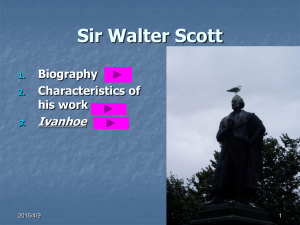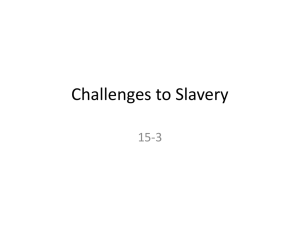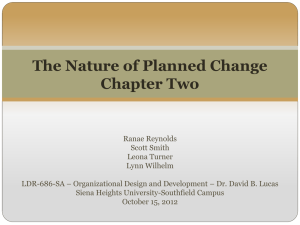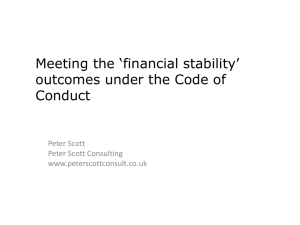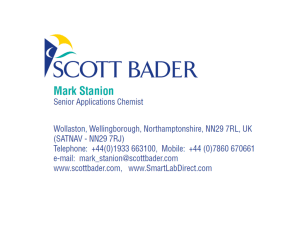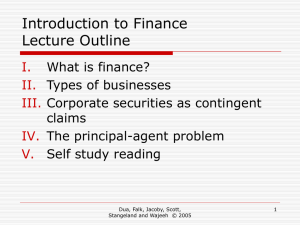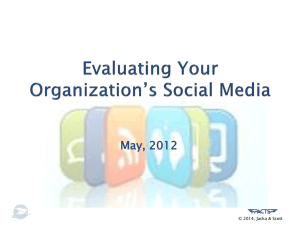FBA Webinar - University of Louisville
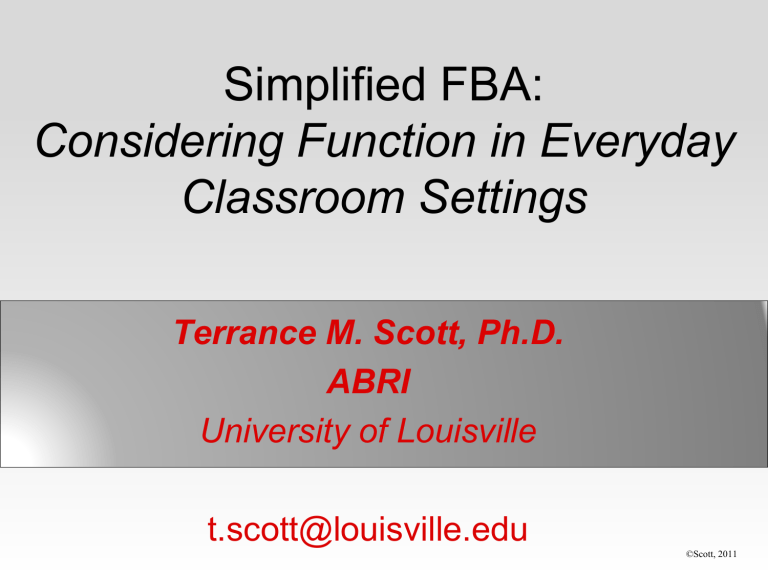
Simplified FBA:
Considering Function in Everyday
Classroom Settings
Terrance M. Scott, Ph.D.
ABRI
University of Louisville t.scott@louisville.edu
©Scott, 2011
Assessing predictable relationships between the environment and behavior
Involves gathering information from all those who know student
Predict when/where behavior problems will occur
Determine why problems occur
The purpose is to get the information necessary to create a successful plan
©Scott, 2011
Why Do People Behave?
Modeling? Accident?
Instinct?
Condition??
Why Do People Continue Behaving?
IT WORKS!
©Scott, 2011
Functions
• Legitimate Functions
– Get something (attention, tangible, event, etc)
– Avoid something (attention, event, person, etc)
– Self-stimulation (hair twirling, rocking, etc)
• Non-Legitimate functions
– Power (not specific - all behavior is for power)
– Control (not specific - all behavior is for control)
– Didn’t take meds (antecedent - not a function)
– Crazy parents (not a function)
©Scott, 2011
©Scott, 2011
Simplified FBA
1. Identify a behavior of concern
– Define in a way that is observable
2. Identify predictors in the environment
– Things that happen before and after
3. Identify a function
– Why does that happen?
4. Teach a replacement behavior
– What is appropriate way to get same function?
5. Change the environment to prevent
– What could make the problem not happen?
– What consequences are functional?
©Scott, 2011
Functional Behavior Pathways
Setting
Condition
Antecedent
Trigger
Problem
Behavior
Replacement
Behavior
Access or
Avoid = reinforce
©Scott, 2011
Eric yawns loudly when the teacher is working with another student and the teacher comes to him and answers a question
©Scott, 2011
Eric taps his pencil loudly against his paper while teacher is working with another student and the teacher comes to him and provides assistance on math
©Scott, 2011
Eric drums on his desk while the teacher works at the board and the teacher looks at him and excuses him to the restroom
©Scott, 2011
STEP 1
DEFINE THE PROBLEM
Be so clear in your definition that when you ’re done anyone could act out the problem and it would look/sound just like it does in reality
©Scott, 2011
STEP 2
IDENTIFY PREDICTORS
Let ’s bet – when do you think Eric will make noises? Also, what do you think will likely happen when he does? On what environmental events would you put your money?
©Scott, 2011
Functional Behavior Pathways
ERIC
Disruptive
Noises
In an academic setting
No direct teacher attention
Teacher provides attention
Replacement
Behavior
©Scott, 2011
STEP 3
IDENTIFY FUNCTION
What ’s the purpose of this behavior?
Why would the student want to do it? What is in it for him?
©Scott, 2011
Functional Behavior Pathways
ERIC
Disruptive
Noises
In an academic setting
No direct teacher attention
Teacher provides attention
Replacement
Behavior
The function of the behavior is to gain teacher attention
©Scott, 2011
STEP4
TEACH A REPLACEMENT
BEHAVIOR
What behavior would get the same function for the student and be appropriate for environment?
©Scott, 2011
Functional Behavior Pathways
ERIC
Disruptive
Noises
In an academic setting
No direct teacher attention
Raise Hand and wait quietly
Teacher provides attention
©Scott, 2011
Effective Instructional Strategies
Modeling
• Show and tell students what it is that is expected under specific circumstances. Do not assume that they know and can.
Opportunities to Respond (OTR)
• Asking questions
- Group (choral) or individual responses (evidence says mixed)
• Requests for student behavior
Prompts and Cues
Verbal and Gestural
- Precorrection
STEP 5
CHANGE THE
ENVIRONMENT TO
PREDICT SUCCESS
What can be done before the behavior occurs and what should be done after positive and negative behaviors?
©Scott, 2011
Developing a plan for creating an instructional environment that predicts positive behavior in place of problems
Teach replacement behaviors
Create environments that predict success
Facilitate success
Provide functional consequences for positive & negative behaviors
Monitor effectiveness of plan
©Scott, 2011
Functional Behavior Pathways
Routines
Functional
Consequence
Curriculum
Engagement
Disruptive noises
Time
Academic work setting
Expectations
No direct teacher attention
Physical
Arrangement
Raise hand and wait quietly
Teacher provides attention
Examples
Prompts Functional
Consequence
©Scott, 2011
Effective Reinforcement
• Use the least amount necessary
• Approximate and/or pair with natural reinforcers
• Make part of routine and systems
Eric: hand raising
• Pre-plan and teach consequences
©Scott, 2011
Effective Punishment
• Use the least amount necessary
• Pre-plan and teach
• Use only with reinforcement for replacement behavior
Chris:
• Should defeat function of problem behavior
Punishment
©Scott, 2011
Escape Function Student Example
Curriculum
Routines
Engagement
Time
In an academic classroom
Expectations
Any request to work on academics
Physical
Arrangement
Examples
Prompts
Rude, defiant, refuses, ignores
Complete work to earn free time
Functional
Consequence
Escape academic work in class
Functional
Consequence
©Scott, 2011
Doctoral Program In Behavior Disorders
Terry Scott
Professor and Distinguished University Scholar
College of Education and Human Development
University of Louisville
Louisville, KY 40292 t.scott@louisville.edu
(502) 852-0576 ©Scott, 2011


